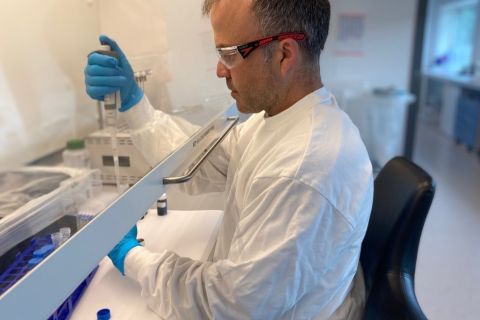When it comes to the design of the process topsides for an oil and gas facility, real estate is expensive. It is expensive not just from a square footage perspective but also from a cubic footage perspective.
The larger the volume of a piece of process equipment is, the higher the operating and flooded weights of that equipment item are. These weights have a significant impact on the design of the support structure for the equipment via the resultant stresses, resulting in a bulkier structure that in itself weighs more. Adding more structure results in increased costs to the facility. So it will come as no surprise to find that engineers are always looking for ways to reduce space and weight.
However, reducing space and weight doesn’t help if the smaller equipment brings with it additional problems with regard to operations and the associated costs. If operators solely focus on the capex and do not take into consideration the opex, they are only looking at a portion of the overall picture. Truly effective compact solutions bring benefits in both capex and opex—and even revenue improvement—impacting the life-of-field economics.
For example, the current crop of high-tech internals for two- and three-phase separators not only allows a reduction in the required residence time within a separation vessel but also for the more effective use of that residence, leading to smaller separator vessels. Also, the adoption of state-of-the-art electrostatic technologies for crude oil dehydration and desalting can reduce the required vessel size by 50% or more.
Economic trade-offs
However, compact processing technologies often come with a higher price tag when compared to their conventional counterparts. And, while the smaller and lighter equipment will have some associated savings in the structural requirement, this may not always be sufficient to justify the adoption of that solution unless it brings something else of value along with it.
Natural gas with a significant quantity of CO2 present can be treated using conventional amine technologies or through the use of membrane separators. While membranes are smaller and lighter compared to amine systems, this might not always be sufficient to tip the balance in their favor. Once other factors such as the cost of operating an amine system compared to membranes, the maintenance required and operational flexibility are taken into account, other valuable arguments enter the conversation, and the economic balance shifts.
While being able to identify the capital benefits a certain technology may bring is relatively straightforward (e.g., saving space and weight, reducing ancillary equipment, etc.), trying to place an economic value on some aspects that a technology brings from an operational perspective can be problematic, even though that feature does have economic benefits.
Some operational benefits can be easily quantified, such as a reduction in chemical usage, utilities or consumables. Other benefits such as reliability, operability and maintenance costs are not so easy to put a figure on.
In produced water treatment, the current state-of-the-art compact flotation units (CFUs) can be up to 75% the size and weight of a conventional induced gas flotation unit (IGF), which is a straightforward capex benefit. Adoption of CFU technology also can reduce power requirements and achieve the needed performance with a reduction in chemical injection amounts, both being clear opex benefits. However, the fact that some designs of CFU operate flooded and therefore are motion-insensitive gives improved operability compared to designs of IGF, which operate with controlled liquid levels. Trying to put a price on this improved operability is not going to be easy, even though it would be of value to nearly all operators.
Downstream benefits
It is not just the capex and opex benefits associated with the equipment items that have to be considered, but also the downstream benefits that the adoption of certain technologies can bring.
Seawater treatment for reinjection has been undertaken for many years using multimedia filtration that can achieve filtration down to the 2-micron to 5-micron level. While this is a very low level of particulate removal, it should not be forgotten that seawater does have a significant level of particulates below that level. And these particulates will get passed on to any downstream equipment (such as sulfate removal membranes), causing fouling or, injected into the formation, causing problems there.
Microfiltration (MF) and ultrafiltration (UF) both employ membranes, with MF removing particulates 0.1 microns and greater and UF removing 0.01 microns and greater. Both technologies deliver demonstrable savings in operating weight, which can be quantified for the capex evaluation. Additionally, filtration at this level essentially prevents any downstream fouling, extending equipment life and the time between membrane cleaning and significantly reducing the requirement for expensive downhole treatments, which have a noticeable beneficial impact on the opex and life-of-field economics. Another benefit that some compact technologies can provide—often not taken into consideration—is the associated logistical costs that come with the use of conventional processing solutions.
The removal of oxygen from seawater helps prevent corrosion of downhole equipment, and compact seawater de-oxygenation technologies, such as the newly introduced Cameron CDX compact de-oxygenation system, can provide a dramatic reduction in operating and flooded weights when compared to conventional vacuum towers and vacuum stripping. Compact de-oxygenation can also remove the requirement for chemical treatment for foaming as well as oxygen and chlorine scavenging. Not requiring these chemicals removes not only the requirement for the chemical injection equipment but also the requirement for purchasing the chemicals, storing them onshore, shipping them to the offshore facility, lifting them onto the facility, storing them prior to use, transferring them into the injection equipment and removing used chemical tanks from the offshore facility onshore. All of these items cost operators significant time and money and unnecessarily occupy valuable real estate.
In summary, for any compact technology to be fully evaluated from an economic perspective, it is necessary that all of the value-added features be considered at an early stage from a capex, opex and revenue improvement perspective and not just the space and weight benefits.
Recommended Reading
Spate of New Contracts Boosts TechnipFMC's Subsea Profits
2024-04-30 - TechnipFMC's operational profits are growing as the company heightened its focus on “quality” subsea orders, which earned $2.4 billion for the first quarter.
Message in a Bottle: Tracing Production from Zone to Wellhead
2024-04-30 - New tracers by RESMAN Energy Technology enable measurement while a well is still producing.
Defeating the ‘Four Horsemen’ of Flow Assurance
2024-04-18 - Service companies combine processes and techniques to mitigate the impact of paraffin, asphaltenes, hydrates and scale on production—and keep the cash flowing.
Tech Trends: AI Increasing Data Center Demand for Energy
2024-04-16 - In this month’s Tech Trends, new technologies equipped with artificial intelligence take the forefront, as they assist with safety and seismic fault detection. Also, independent contractor Stena Drilling begins upgrades for their Evolution drillship.
AVEVA: Immersive Tech, Augmented Reality and What’s New in the Cloud
2024-04-15 - Rob McGreevy, AVEVA’s chief product officer, talks about technology advancements that give employees on the job training without any of the risks.





